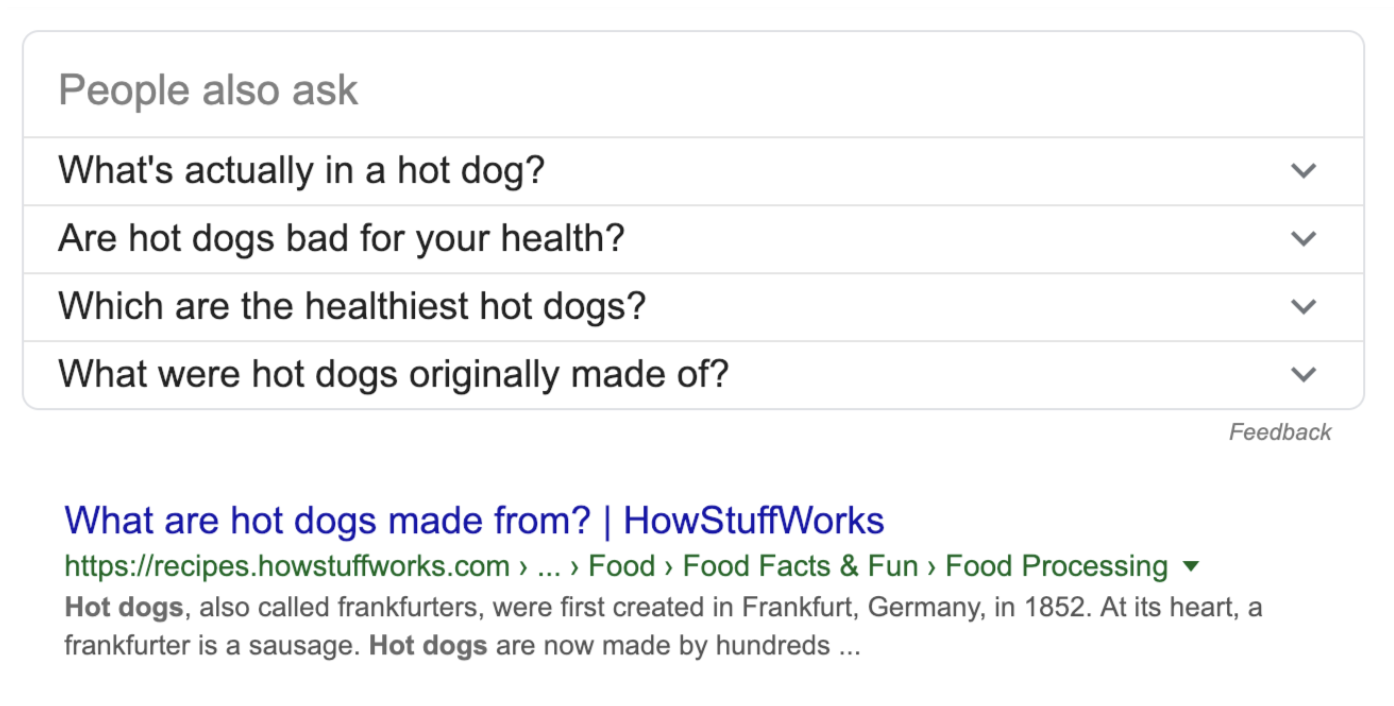According to the National Hot Dog & Sausage Council–which we all already know about–notes that hotdogs, whether regular, beef, pork, or turkey, all begin with “trimmings.” Now you may rightfully be asking yourself what trimmings are and why are they using a purposefully vague word to describe a simple product. Well first, the Food and Agriculture Organization of the United Nations describes Trimmings as thus:
"The raw meat materials used for precooked-cooked products are lower-grade muscle trimmings, fatty tissues, head meat, animal feet, animal skin, blood, liver and other edible slaughter by-products."
Which reading all of that might make you rethink ordering a hot dog at your next Costco outing but did you know that Costco sells 100 million hot dogs a year? Or that 9 billion hotdogs are sold each year? And that 95% of them are just in American homes? That’s 350 million pounds of lower-grade muscle trimmings, fatty tissues, head meat, animal feet, animal skin, blood, liver and other edible slaughter by-products. So why do we do this to ourselves? And why am I starting off this piece making you question what you may have had for lunch? Well the key to all of this starts with the fact that 9% of all hot dog sales happen at the ballpark.
@Schneiders on Twitter
In a recent discussion amongst coworkers, we were talking about a simple question: How do you write a blog? How do you generate content that can engage an audience while still pushing people to your product or service? You could do what I used to do (and embarrassingly still do sometimes) and just do a basic word association. Are you writing about a clothing company or shop? Well here are the Top 5 Trends This Year or 3 Must-Have Accessories. This gets the job done, it pushes straight to the product but you have to think how people are going to interact with this. Picture your audience seeing the link and clicking on it and with 5 quick scrolls of the mouse they have seen every product on the list and they are gone. So what do you do? How do you get them interested and engaged?

This next approach requires a little more insight and is what I believed to be the best way to deliver a blog to your target audience. Your client is a food manufacturer looking to boost engagement. You could do a recipe blog post and work the products into the recipes but how does that stand out? Think about the people reading your content and how to get into their heads. Why not go for something topical and relevant? Like how 12% of new gym memberships come in January which is about a 33-50% increase in volume. So if people are looking to get in shape and presumably eat better, why not a 10 Healthy Recipes instead? Suddenly people are more inclined to read and most importantly, stay on the page. But can this go wrong? Sometimes jumping on a topical bandwagon can help increase your brands profile while the iron’s hot but it also can backfire when you haven’t given enough time to understand context.
This brings me to what I believe the superior method of writing blogs: Data. It’s taking everything I’ve talked about and applying it to facts and figures that are already proven to offer results. Ian Cooney taught me this and it’s something I will continue to use for all future blog topics. Using tools like Google Search Console, we can find how people are discovering your product and website. It will show the most popular Google searches and if your website is delivering on those topics. If there are certain topics not being addressed, then you can create new content about those subjects or even contrast those topics to help frame your product as superior or a solution. Websites like Moz Keyword Planner or even just doing a Google search bar can sometimes spell blog topics right out for you.

Other options include reddit and Buzz Sumo to discover what the most popular topics are and help you judge the sense of virality. Reddit ranks topics and Buzz Sumo shows you the level of engagement on social websites. This allows you to figure out what people are talking about and how to write for it. Answer the Public is another great tool for data driven blog topics that visualizes the Who, What, When, Why, Which, Will, Are, How and Can about a subject. Most of these suggestions can already be used for a blog topic!

Finally, this brings us back to the beginning and you may still be wondering what any of this has to do with the Toronto Blue Jays making the World Series. While talking about how to write a blog, I mentioned that it’s not about selling hot dogs; it’s about selling the ballpark. Going to a baseball game, you better believe you are going to want a hot dog. It’s no longer a product but an experience. You can use your intuition and you can look at the numbers and the data and it will all point to it being a great topic to use. You can see more people are talking about sports than hot dogs. You can see that 9% of hot dog sales happen at a ball park. And you can see that people clearly don’t care how hot dogs are made since we just keep eating them.

Use data to drive your next blog post.




